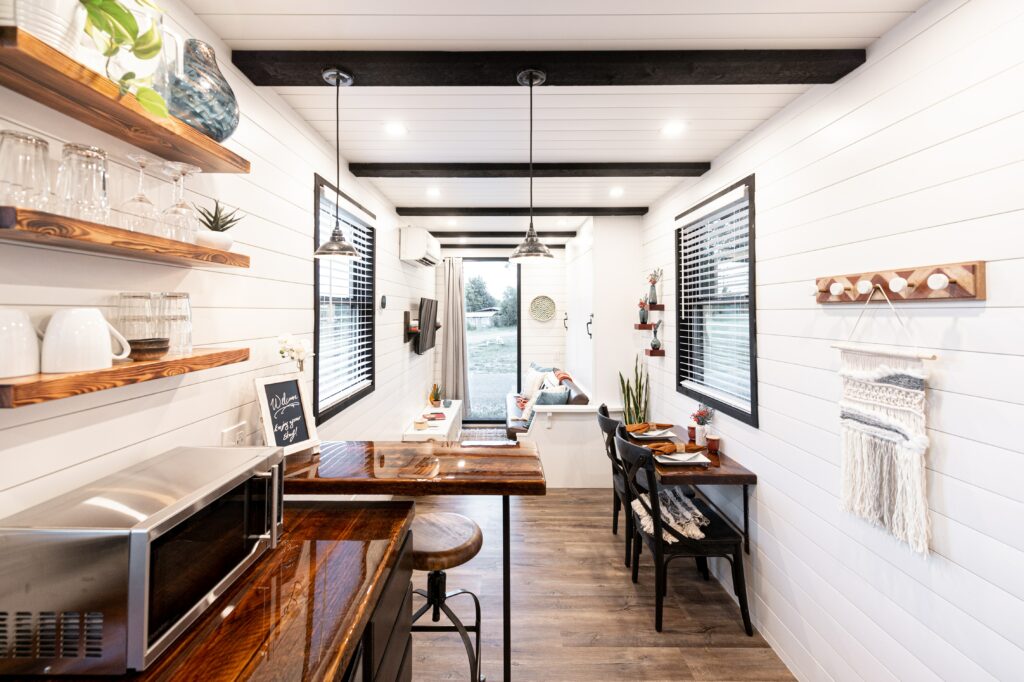Tiny Houses
The tiny home market is growing, especially in the US, with increasing popularity and potential for cash returns of 5% to 15%. Margins and ROI vary based on location and costs, but can be higher than traditional real estate investments. Investors should conduct thorough research before investing.
Market Opportunity
Despite some claiming that tiny homes are merely a passing trend, the movement remains robust. As per the Global Tiny Homes Market report, the market is expected to expand by $3.57 billion from 2022 to 2026.
In the United States, the tiny home market has also been growing steadily in popularity. According to a report by the National Association of Home Builders, the number of tiny homes built in the United States increased from less than 1,000 in 2010 to around 10,000 in 2020.
While the tiny home market is still relatively small compared to the overall real estate market, it has attracted a growing number of buyers who are looking for affordable, sustainable, and minimalist living options. As the trend towards downsizing and minimalism continues, it’s likely that the tiny home market will continue to grow in popularity.

Returns
The cash on cash returns, margins, and ROI for real estate investors when investing in Tiny Homes can vary depending on factors such as location, demand, and property management. Generally, the cash on cash returns for Tiny Homes can range from 5% to 15%, with some investors reporting even higher returns.
Margins for Tiny Homes can also vary depending on the location and the cost of materials and labor. However, some investors have reported margins of up to 25% or more.
ROI for Tiny Homes can vary based on the same factors mentioned above, but investors can generally expect to see a higher ROI compared to traditional real estate investments due to lower costs and potentially higher rental yields.
The cash on cash return is impacted by various factors such as the cost of financing, maintenance and repair costs, property management costs, vacancy rates, and rental income. Investors can increase their cash on cash return by lowering their costs and increasing their rental income.
Ultimately, the cash on cash returns, margins, and ROI for Tiny Homes will depend on the individual property and market conditions, and investors should conduct thorough research and due diligence before making any investment decisions.
Returns
The cash on cash returns, margins, and ROI for real estate investors when investing in Tiny Homes can vary depending on factors such as location, demand, and property management. Generally, the cash on cash returns for Tiny Homes can range from 5% to 15%, with some investors reporting even higher returns.
ROI for Tiny Homes can vary based on the same factors mentioned above, but investors can generally expect to see a higher ROI compared to traditional real estate investments due to lower costs and potentially higher rental yields.
The cash on cash return is impacted by various factors such as the cost of financing, maintenance and repair costs, property management costs, vacancy rates, and rental income. Investors can increase their cash on cash return by lowering their costs and increasing their rental income.
Ultimately, the cash on cash returns, margins, and ROI for Tiny Homes will depend on the individual property and market conditions, and investors should conduct thorough research and due diligence before making any investment decisions.

Financing
The financing of tiny homes can be challenging due to their unique nature and limited resale value. Traditional lenders may not offer loans for tiny homes or may require higher interest rates and shorter loan terms. However, specialized lenders and alternative financing options like personal loans and credit cards can be used to finance tiny homes.
The average cost of purchasing a tiny home can range from $30,000 to $100,000 or more, depending on factors such as size, materials, and location. It’s important to do research and due diligence to find the right financing option and ensure that the investment is worth the cost. While tiny homes have a lower resale value compared to traditional homes, they can still appreciate in value over time and provide a unique, sustainable living option.
Insurance
Tiny homes require insurance coverage just like any other type of dwelling. While traditional homeowners insurance policies may not always be suitable for tiny homes, specialized policies exist to provide coverage. Factors such as the type of tiny home, whether it is on wheels, and its location can affect the type and cost of insurance coverage.
The cost of insurance for a tiny home can vary depending on factors such as the type of tiny home. In general, tiny home insurance tends to be more expensive than regular single-family home insurance because tiny homes are often considered higher-risk properties due to their unique characteristics and the potential for damage from natural disasters or theft. However, the exact cost of insurance will depend on the specific policy and the coverage limits selected. It’s important for landlords to compare policies from multiple insurance providers and to consider the level of coverage they need to adequately protect their investment.
Taxes
You can claim deductions for expenses such as repairs and maintenance, property management fees, and depreciation. There are also tax credits available for certain types of energy-efficient upgrades, such as solar panels or geothermal heating and cooling systems. These credits can help offset the cost of the upgrades and reduce overall tax liability.
Form and LLC?
If an investor wants to put their tiny home into an LLC, they will need to follow the same process as they would for any other type of property. This typically involves forming an LLC and transferring the ownership of the tiny home to the LLC.
The specific steps involved in forming an LLC and transferring ownership of a tiny home will vary depending on the state where the property is located. In general, the investor will need to:
1. Choose a name for the LLC and register it with the state
2. File articles of organization with the state
3. Draft an operating agreement that outlines the rules and procedures for the LLC
4. Obtain any necessary permits and licenses for the tiny home
5. Transfer ownership of the tiny home to the LLC by filing a bill of sale or other transfer documents with the state
It’s important for investors to consult with a lawyer or tax professional before putting their tiny home into an LLC to ensure that they are complying with all relevant laws and regulations. Additionally, investors should consider the potential benefits and drawbacks of putting their tiny home into an LLC, such as liability protection and tax implications.
Business Bank Account
Yes, it is recommended that you have a separate business bank account for your LLC. This helps to keep your personal finances separate from your business finances, which is important for legal and tax purposes. It also makes it easier to track your business expenses and income, which is essential for proper accounting and financial management. Additionally, having a separate business bank account can help you establish and build business credit, which can be useful if you plan to seek financing or credit in the future.
Inspections
Yes, it is always recommended to have a professional inspection conducted before purchasing any investment property, including a tiny house. The inspection can identify any issues with the property and help you make an informed decision about whether to proceed with the purchase or negotiate repairs or a lower price. The inspection should cover the foundation, structure, plumbing, electrical, and any other systems or features specific to the tiny house. It’s also a good idea to check for any zoning or code violations and verify that the property complies with local regulations.
Regulations and Policy
Challenges exist for people who want to live in tiny homes, such as difficulty finding available land and navigating complex building codes and zoning laws. Some states have embraced the tiny house movement and have made it easier for people to live in tiny homes, other states have yet to establish clear zoning laws and building codes for tiny homes.
U.S. Department of Housing and Urban Development (HUD) to support the use of manufactured homes as affordable housing options. HUD has announced plans to provide grant funding to support research and development of new manufactured housing designs, including tiny homes, that are more energy-efficient and environmentally friendly.


